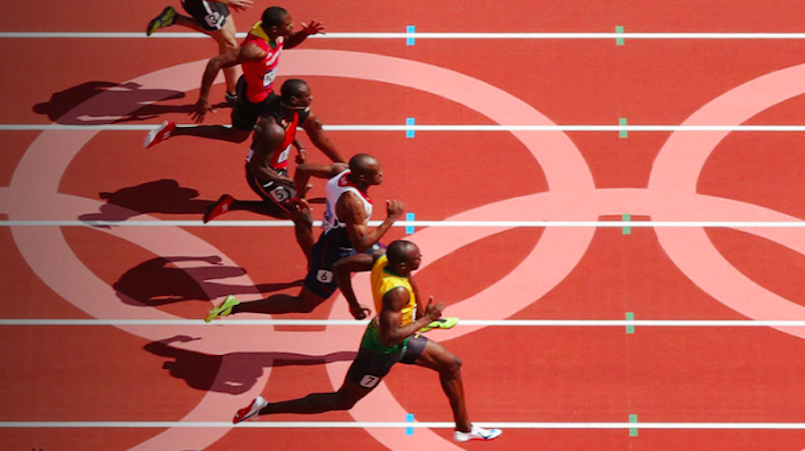I drink your milkshake: Seven aims to gain rival rights-holders' audiences with Tokyo Olympics plus 9m IDs, launches FMCG attribution play with Flybuys

It is a race: Seven aims to catch rivals on IDs, take their sports audiences and give advertisers rapid, data-matched results.
Seven aims to gain 2.5 million audience IDs from the Tokyo Olympics and the network thinks it can steal a march on rival sporting rights-holders – and their audiences – while delivering major gains for advertisers seeking measurable results. It's also aiming to out-sprint supermarkets to deliver FMCG sales uplift figures to advertisers via a new purchase and audience data ID matching play with Flybuys.
What you need to know:
- Seven this week hit 6.5m audience IDs, up 40 per cent year on year.
- Audience Intelligence Director Andrew Brain thinks the Tokyo Olympics can boost its logged in audience data pool to 9m. But then it has to try and keep them.
- The new dataset will inform retention strategies and programming.
- It will also help Seven take audiences from other sports rights holders, such as tennis, said Brain, changing the dynamics of sports rights investment.
- For FMCG advertisers, a new audience-purchase data ID matching push with Flybuys aims to show brands how their ads have driven sales results “potentially faster than what they currently get from a supermarket”.
[The new Flybuys data matching push] means we are closing the loop with true sales uplift and in-store conversion. We are the first to actually put ID to ID, so we can track the measurement and attribution all the way through.
Seven aims to gain 2.5 million audience IDs from the Tokyo Olympics – and the network thinks it can steal a march on rival sporting rights-holders while delivering major gains for advertisers seeking measurable results.
In the week before the games, Seven hit 6.5m IDs, up 40 per cent year on year, according to Audience Intelligence Director, Andrew Brain. While other networks claim higher tallies, “these are verified IDs, so we’re not just stating massive numbers for the sake of what a total pool of IDs could look like,” he told Mi3.
The 'SWM-IDs' – proprietary identifiers for logged-in connected TV viewers – mean Seven knows who its audiences are and what they watch. That in turn allows advertisers to better target and ultimately match against their own audience databases – or via Seven’s partnership with Flybuys – purchase data.
ID sprint
“The Olympics will give us another big bump, we’re aiming to get to about 9 million [as a result] and the reason is that we have 7Plus. It is going to be a very, very strong tool for the Olympics: 43 channels of sport related to Tokyo, so whatever discipline you want to watch, you can get it.”
The subsequent challenge is keeping those audiences. If Seven can do so, it could change the dynamics of sports rights investment for both the network and its rivals.
“We have spent a lot of time on the retention strategy, because while the Olympics will deliver that burst to drive our first party identities, ultimately the value of those identities is around the active user base,” said Brain. “How do we then pull the right levers to make sure that we’re pushing the right content to the right audiences to keep them engaging post-Olympics?”
The plan is to retain new audiences by using their own consumption data to inform packaging of programming and other content.
For example, breaking out DIY segments from the 90 weekly minutes of Better Homes and Gardens for people who care about DIY but not about gardening and slicing it into shorter-form video. Likewise, informing broader programming and commissioning for Seven’s streaming platform, said Brain, “so [our IDs] are absolutely driving better business decisions.”
Attribution shift
For advertisers, Seven’s strategy is to “create visualisation of audiences and consumers that brands and agencies can actually see,” said Brain, showing advertisers both lapsed and active buyers within those segments and how to buy against them.
But the network is now taking the next step in its data partnership with Flybuys, matching audience SWM-IDs with purchase data to quickly show FMCG brands whether their connected TV ads have driven a sale, said Brain.
“It means we are closing the loop with true sales uplift and in-store conversion. We are the first to actually put ID to ID, so we can track the measurement and attribution all the way through. So it becomes a 360-degree wheel for brands; they can essentially look at the ID and see if [their intended target] actually shifted from a lapsed to an active buyer, giving more reliable outputs of what’s working and what isn’t.”
For FMCG advertisers, Brain said the aim is to deliver those results “potentially faster than what they currently get from a supermarket”.
Smash and grab
While Seven reportedly paid close to $200m for the 2016 Rio Olympics, PyeongChang Winter Games and Tokyo, the rights investment is no longer purely about ads and sponsorship, given the audience data gains on the table. Seven plans to use that data to its advantage – at rivals’ expense.
“If you look at things like the tennis, Nine now has the rights. But we know tennis will be highly viewed within the Olympics – and we can pull the tennis audience back into RedIQ [Seven's customer data platform, or CDP],” said Brain.
“In the future, for other sports, if we can understand what the rights look like and profile the audiences – the value in that is huge.”
